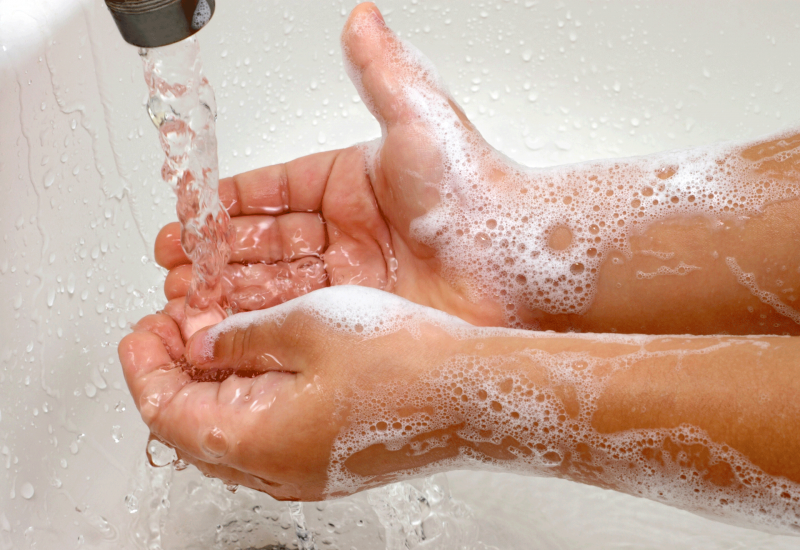Indeed, the value of building a positive approach to hygiene in schools is clear. “The school setting is an ideal place to introduce and reinforce the importance of handwashing for long-term health,” says Rick Malley, professor of pediatrics at Harvard Medical School, senior physician in the Division of Infectious Diseases and Director of the Travel Clinic at Boston Children’s Hospital. “Emphasizing healthy handwashing behavior early in life has significant long term benefits, including fewer days of school or work missed and reduction in transmission of disease.”
Simple, Effective Measures Schools Can Take to Prevent Coronavirus
When it comes to curbing the spread of coronavirus, the most effective response for schools and educators may be: Think globally, act locally. As public health responses to this emerging concern continue to take shape, schools and communities can monitor the global landscape, but they should focus their attention on their local, everyday settings — classrooms, cafeterias, bathrooms, the gym — where behavior and habits can help mitigate the effects of any disease outbreak.
- Handwashing remains the single most effective way to prevent the spread of infection. Mandatory handwashing policies have been linked to reduced illness-related absences. Make sure students and all school staff are aware of the importance of washing hands. Adults should practice and model good public-health hygiene on their own: handwashing, cough-covering, staying home when sick or symptomatic.
- Teach best practices like scrubbing for 20 seconds with soap and warm water and making sure to clean the backs of hands, between fingers, and under the fingernails.
- Encourage handwashing before meals; upon entering the building or classroom; after recess; after coughing, blowing your nose, or sneezing; and after using the bathroom.
- Schools should build disease-prevention practices into daily schedules.
-
-
- Add 5 minutes to lunch and recess periods to ensure students have time to wash their hands.
- Build in the practice of handwashing throughout the day, during transition times.
- Provide hand sanitizer at school entrances.
- Set up hand-sanitizer stations in each classroom, so that each time children return to the classroom, they get a squirt. Students should be taught to spread the sanitizer evenly and entirely over both hands and to allow their hands to air-dry. (Note that public health guidance says that washing hands with soap and water is most effective, but hand sanitizers with at least 60 percent alcohol are a sound alternative when soap and water are unavailable.)
- Post handwashing reminders around the school that reinforce proper handwashing techniques.
- Make it a classroom habit to regularly clean or wipe surfaces that everyone touches often. Appoint students to a “clean squad,”and make it as special as being appointed line leader or any other classroom perk.
- Schools should ensure that all restrooms are always well stocked with soap and paper towels. Sinks should all have hot and cold running water. Washrooms should be accessible — all students should be able to reach the sink.
- Schools can mobilize PTO and parent volunteers to equip schools and classrooms with cleaning supplies, as needed.
-
- Smooth out processes to accept parent donations of soap, hand sanitizer, and cleaning supplies.
- Take advantage of classroom representatives, if they exist at your school. These classroom-based parent volunteers can coordinate preparedness at a hyper-local level. These preparations can be fun and customized to each classroom.
- Schools can empower middle- and high-school students to get active — through “soap drives,” by supporting or thanking maintenance staff, by student-created hygiene-awareness social media campaigns and posters, etc.
- Schools can tap into young people’s desire to take leadership roles in causes they care about. Help them learn that handwashing and other preventive public health measures will help others and will make a difference.
- Schools can use this opportunity to create relevant learning experiences. Encourage science teachers to create a mini-unit on viruses, germ-fighting, or the science behind the spread of infections. Have students become epidemiologists, sleuthing out clues and finding patterns in how diseases spread.
Focusing on prevention alongside education not only can help control the present spread of disease but can also equip students to be responsible and responsive in the future. “All of these critical measures can support young people as they learn not only to protect themselves but also their communities in the midst of a global public health crisis. We need their action and commitment to become the prevention advocates of the future,” says Dr. Howard Koh, 14th U.S. Assistant Secretary for Health and former Massachusetts Commissioner of Public Health.
Protecting Public Health: The Importance of School-Community Partnerships
Under-resourced schools are particularly vulnerable, raising broader questions around equity and funding for basic supplies and maintenance. For schools with scarce resources, a call to action that demands supplies and infrastructure could increase the burden. In such cases, communities — including health providers, community health organizations, and businesses — should step up to take responsibility, working with schools as partners to help address the problem.
“The coronavirus crisis presents an opportunity for various community partners to reach out to their school colleagues and offer various forms of support to mitigate the threats to children and families. Schools alone will be unable to solve this problem; a coordinated, community response is urgently needed,” says Paul Reville, professor and founding director of the Education Redesign Lab at the Harvard Graduate School of Education.


